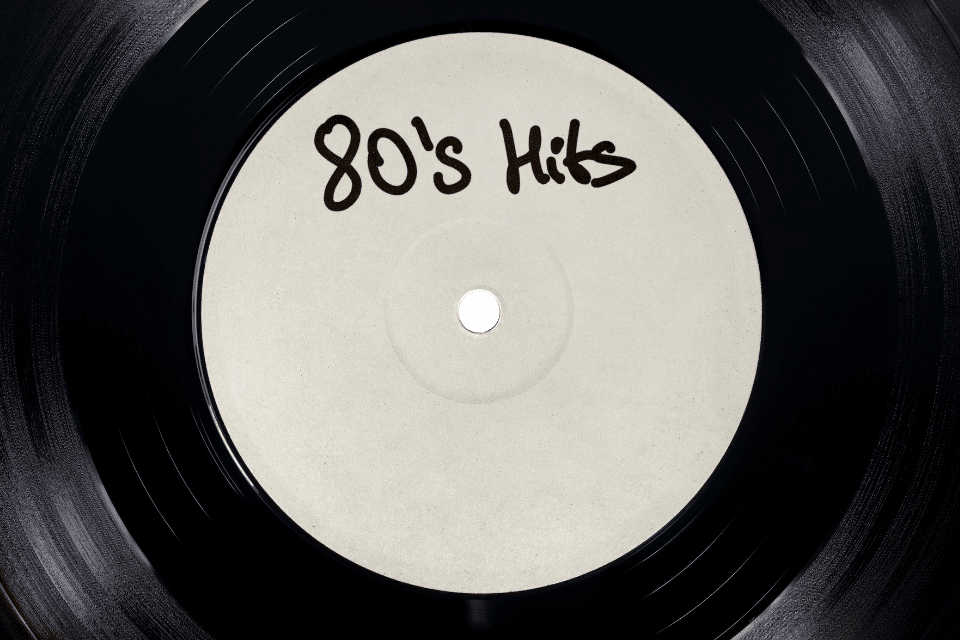When we consider the evolution of the customer from the 1980s until now, it’s enough to give us whiplash thinking of all the [Cue: David Bowie] “ch-ch-ch-changes.” As History.com defines the decade, it’s “often remembered for its materialism and consumerism…the rise of the “yuppie,” an explosion of blockbuster movies and the emergence of cable networks like CNN and MTV, which introduced the music video and launched the careers of many iconic artists.”
Like all other industries, multifamily — then and now — has been along for the ride, learning to navigate and adapt to changing customer needs and demands. Certainly, the future never arrives as planned but the wild innovations in our industry and changes in our world over the past 35+ years have kept things very interesting.
While we don’t want to live in the past, we can look to it to inform our future. In the words of William Wordsworth, “Let us learn from the past to profit by the present, and from the present, to live better in the future.”
So, let’s travel back to the 1980s to get a glimpse of what was driving the customer experience.
Jump to a Section
- Don’t You Forget About Me: Changing Customer Focus
- 80s Trends That Significantly Impacted Customer Behavior
- The Impact of the Customer Evolution on Multifamily
- Modern Solutions to Win (and Retain) Modern Residents
Don’t You Forget About Me: Changing Customer Focus
The 1980s were famously known as the “Me” decade, housing a generation of status seekers who embraced the “greed is good” ideology with a focus on self-centeredness and materialism.
At the same time, corporate power was on the rise, and the up-and-coming individuals of this generation sought to stake a claim in the ever-expanding landscape of consumerism and wealth acquisition.
The insatiable drive for personal success and material gain defined the mindset of many customers during this era, shaping their purchasing behaviors and aspirations.
To get a “feel” for the era, consider these headlines from this iconic age:
- The U.S. Hockey team defeated the Soviet Union in the Winter Olympics. It was an upset dubbed the “Miracle on Ice.”
- Sandra Day O’Connor became the first woman appointed as a Supreme Court Justice.
- John Lennon of The Beatles was assassinated.
- We saw an end to the Cold War as President Ronald Reagan demanded: “Mr. Gorbachev, tear down this wall!”
- The Space Shuttle Challenger broke apart 73 seconds into its flight, killing all seven crew members aboard.
80s Trends That Significantly Impacted Customer Behaviors
Customers Take to Technology
As Wayne and Garth of SNL’s Wayne’s World fame might say, “No way! Way!” By the 1980s, technology had advanced greatly, extending its influence into everyday lives. Computers, once exclusive to businesses, rapidly became commonplace in households and educational institutions, signifying a shift toward a more technologically connected society.
In 1981, the U.S. launched the first space shuttle, Columbia, underscoring the increasing advancements in space exploration and aerospace technology. By the late 1980s, cell phones entered the mix — albeit big, bulky, and in bags. Initially used primarily for business purposes, these early cell phones laid the foundation for the future prevalence of mobile communication technology, foreshadowing its profound impact on the customer experience in the decades to come.
I Want My MTV: Music’s Role in Shifting Trends
In the 1980s, the world of music underwent a revolutionary transformation, significantly impacting customer behaviors and trends. The advent of MTV fundamentally changed how music was consumed, with music videos becoming a powerful medium for artists to connect with their audiences visually. At the same time, compact discs (CDs) were introduced, revolutionizing the music industry and offering a new level of audio fidelity and convenience for customers.
The 80s also witnessed the prolific rise of various musical genres, including pop, punk, new wave, rap, and hip-hop, each leaving an indelible mark on popular culture. Breakdancing also began in this era. Notable releases such as Bruce Springsteen’s “Born in the USA” and Michael Jackson’s “Thriller” captured the spirit of the decade, with their influence transcending mere musical appreciation to shape fashion, dance, and social trends.
However, the rise and fall of acts like Milli Vanilli reflected the evolving dynamics of trust and authenticity in the music industry, signaling a growing awareness of the impact of marketing and image on customer choices.
Bigger Is Better When It Comes to Fashion and Style
The 1980s witnessed a fashion revolution that left a lasting impact on trends and style preferences. Inspired by iconic cultural touchstones like “Flashdance,” teens embraced a distinctive aesthetic characterized by tank tops, leg warmers, and tight, torn jeans.
The fashion mantra “bigger is better” ruled the day, as fashion icons such as Madonna, Michael Jackson, Donna Karan, and Anne Klein set the tone for the era. Leather, fishnet, white gloves, and designer ensembles became emblematic of the era’s eclectic style landscape.
Teased hair, shoulder pads, and power suits were the “it” look for women, while men pulled off a new business look with paisley or red power ties worn with fashionable suspenders or a silk vest.
The era also witnessed a resurgence of voluminous hairstyles, with gels, waxes, and mousses enabling daring experimentation and the creation of diverse and exaggerated coiffures. Headbands, ponytails, mohawks, crimping, and the infamous mullet all had their moment in the 80s. The net effect: outrageous styles that were all about volume!
Technology Meets Content: Film & Television Transform Customer Habits
The 1980s marked a pivotal era in entertainment, characterized by groundbreaking technological advancements and a transformation of customer habits. The introduction of the VCR into households across America revolutionized how people consumed media.
No longer bound by theatrical release schedules, audiences gained control over their viewing experiences, leading to increased demand for home video rentals and purchases.
Blockbuster films of the 80s include:
- “The Breakfast Club”
- “Beetlejuice”
- “The Shining”
- “The Terminator”
- “E.T.”
These movies, and many others, captivated audiences, setting new box office records and becoming cultural touchstones. Simultaneously, the television landscape underwent a dramatic evolution. Cable TV expanded programming beyond traditional networks, catering to diverse interests.
Sitcoms dominated ratings, shaping popular culture with shows like “The Cosby Show,” “Cheers, and ”Seinfeld.” Of course, let’s not forget the popular primetime drama “Dallas” that had Americans obsessed with “Who shot J.R.?”
These changes transformed customer behavior, altered leisure time, expanded advertising reach, and reshaped marketing. As technology and compelling content merged, the entertainment industry was redefined, profoundly impacting customer preferences.
Lifestyle in the 80s: If You’ve Got It, Flaunt It!
The 1980s was a decade of extremes. Fueled by economic growth and a belief in endless possibilities, customers began their love affair with credit cards — borrowing and spending instead of saving for a rainy day. Aerobics, minivans, camcorders, and talk shows wove their way into the fabric of American life.
Beneath the surface, however, challenges emerged: double-digit inflation, rising healthcare costs, and the AIDS crisis took a toll. Yet, the decade also witnessed resilience. The Constitution’s bicentennial sparked national pride, and unprecedented charitable giving highlighted a compassionate side, as Americans donated $115 billion in 1989.
It was a complex era that shaped our world with triumphs and trials.
The Impact of the Customer Evolution on Multifamily
Multifamily has undergone a seismic shift since the relatively simplistic landscape of the 1980s. Once merely a basic shelter with minimal “frills,” apartments have become sophisticated living spaces catering to the evolving needs and expectations of modern residents.
Expectations Then vs. Now
- Living space: The “box with four walls” and a small kitchen vs. thoughtfully designed interiors, open floor plans, and high-end finishes.
- Amenities: Community laundry room vs. fitness centers, co-working spaces, pet-friendly accommodations, and even resort-style pools.
- Communication: Face-to-face vs. digital platforms, including surveys and reputation management powered by AI, and the expectation that responses are immediate, whether through email, text, or social media.
- Technology: Largely non-existent vs. an integral part of the multifamily experience, with smart home features, high-speed internet, and online portals for maintenance requests and rent payments now standard.
The apartment seeker of the 1980s did not have a long list of requirements and amenities; even with many things becoming more sophisticated, for most prospects, it was simply, “Do you have a one-bedroom on the second floor?”
However, today, the multifamily prospect is very different. The rise of online reviews and ratings has empowered renters to research properties extensively before making a decision, increasing competition among property managers to provide exceptional customer service.
As the first wave of Generation X entered adulthood in the 1980s, they represented a new type of renter with distinct preferences. Today, multiple generations — from Boomers to Gen Z — have unique demands, shaping the multifamily industry’s focus on flexibility, personalization, and community.
These profound changes underscore the evolution from a basic housing option to a lifestyle choice, and property managers and owners must adapt to residents’ continually changing needs and desires.
Modern Solutions to Win (and Retain) Modern Residents
Yes, the 80s were “totally awesome,” but you don’t want to get stuck in the past! It’s fun to look back and recognize the tremendous change that’s taken place over the last several decades. Unfortunately, settling for the status quo happens all too often.
Change can be hard, but change is also a good thing. Grace Hill offers a suite of solutions that can help you evolve to meet the changing needs and desires of modern renters. It’s not a hill you have to climb alone. Grace Hill has a team of multifamily experts to help you every step of the way because, at the end of the day, we’re more than a provider of technology solutions; we’re your partner in success.


 Customer Support
Customer Support




